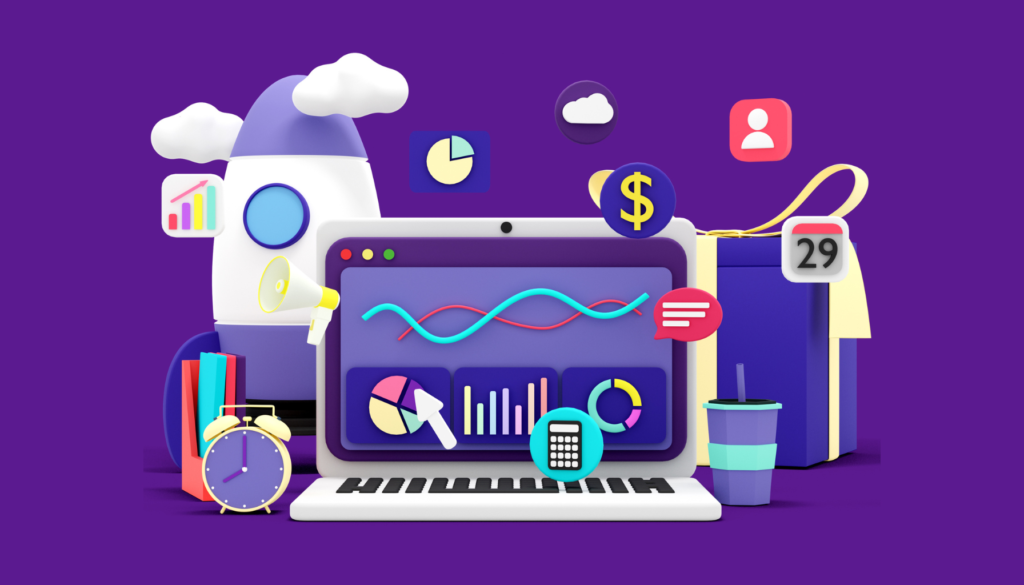What are the 7 Steps in Creating a Website?
Introduction
So, you’re ready to dive into the world of website creation? Whether you’re starting a new business, launching a blog, or just getting creative, building a website can be an exciting but sometimes overwhelming process. But don’t worry, I’ve got you covered! In this guide, we’ll walk through the 7 crucial steps to creating a website, from securing a domain name to ongoing maintenance. Let’s get started!

Step 1: Domain Registration
The first step in creating your website is registering a domain name. This is your website’s address on the internet, like “www.marqnetworks.com“. It’s how people will find you, so it’s a pretty big deal.
2.1. Why Domain Registration is Crucial
Your domain name is more than just an address; it’s a key part of your brand identity. A good domain name can make a strong first impression and help your website rank better in search engines.
2.2. How to Choose the Right Domain Name
Picking the right domain name is a blend of creativity and strategy. Here’s what to consider:
- Keep it Simple: A short, memorable name is easier for visitors to remember.
- Include Keywords: If possible, include a keyword related to your business or industry.
- Avoid Numbers and Hyphens: They can be confusing and hard to remember.
Once you’ve picked your perfect domain name, you’ll need to register it through a domain registrar like GoDaddy or Namecheap.
Step 2: Website Design Planning
Before you start building, it’s essential to plan your website’s design. This is where you decide on the overall look and feel of your site.
Importance of Planning Your Website Design
Think of your website as your digital storefront. You want it to be inviting, easy to navigate, and reflective of your brand. A well-thought-out design plan will save you time and headaches down the road.
Tools and Techniques for Effective Design Planning
Use wireframing tools like Sketch or Adobe XD to map out your site’s layout. Decide on color schemes, fonts, and imagery that align with your brand. Don’t forget to plan for mobile responsiveness – a must in today’s mobile-first world.

Step 3: Content Creation
Now that you’ve planned your design, it’s time to fill your site with content. Content is king, and it’s what will engage your visitors and convert them into customers.
Developing a Content Strategy
Start by defining your target audience and what you want to communicate to them. What problems does your audience have that you can solve? Your content should be informative, engaging, and aligned with your business goals.
Writing Engaging and SEO-Friendly Content
When writing content, keep SEO in mind. Use keywords naturally, create compelling headlines, and include calls to action. Your content should be easy to read and offer value to your visitors.
For example, if you’re a web development company, you might write blog posts on “The Benefits of Responsive Design” or “Top 5 Web Development Trends in 2024.”

CLAIM YOUR MARKETING STRATEGY SESSION TODAY!
WE REVIEW YOUR MARKETING EFFORTS & SHOW YOU AREAS TO IMPROVE.
Step 4: Web Development
With your content ready to go, it’s time to develop your website. This involves turning your design and content into a functional site.
Choosing the Right Web Development Platform
There are several platforms to choose from, depending on your needs:
- WordPress: Great for flexibility and a wide range of plugins.
- Wix or Squarespace: Ideal for beginners with drag-and-drop simplicity.
- Shopify: Perfect for eCommerce sites.
The Development Process Explained
The development process typically involves setting up your web hosting, installing your CMS (Content Management System), and then uploading your content and design elements. It’s important to test as you go to ensure everything works smoothly.
Step 5: Search Engine Optimization (SEO)
Once your site is built, you want people to find it, right? That’s where SEO comes in.
Why SEO Matters
SEO is what helps your website appear in search engine results. The better your SEO, the more likely people will find your site when searching for related terms.
Essential SEO Techniques for Your Website
Here are a few key SEO practices to implement:
- Keyword Research: Identify and use relevant keywords throughout your site.
- On-Page SEO: Optimize your titles, meta descriptions, and images.
- Technical SEO: Ensure your site loads quickly, is mobile-friendly, and has clean code.
By following these techniques, you’ll improve your chances of ranking higher in search results, driving more traffic to your site.
Step 6: Testing and Launch
Before you make your site live, it’s critical to test everything to ensure it works as expected.
Importance of Thorough Testing
Testing helps you catch any issues before your visitors do. You’ll want to test your site on different devices and browsers, check for broken links, and make sure all forms are functioning correctly.
Steps to a Successful Website Launch
Once you’re confident everything is working, it’s time to launch. Make sure to have a checklist for a smooth launch day:
- Double-Check Content: Ensure all content is accurate and up-to-date.
- Backup Your Site: Before launching, create a full backup of your website.
Announce Your Launch: Let your audience know your site is live through social media and email newsletters.
Step 7: Ongoing Maintenance
Congratulations, your website is live! But the work doesn’t stop here. To keep your site running smoothly, regular maintenance is necessary.
Why Maintenance is Critical
Just like a car, your website needs regular check-ups to stay in top shape. This includes updating software, fixing bugs, and adding new content.
Regular Updates and Security Checks
Regular updates ensure your site remains secure and compatible with new technologies. Make sure to:
- Update Plugins and Software: Keep everything up to date to prevent security vulnerabilities.
Monitor Performance: Use tools like Google Analytics to track your site’s performance and make necessary adjustments.
Conclusion
Creating a website may seem like a daunting task, but by following these 7 steps, you can build a successful and effective online presence. From domain registration to ongoing maintenance, each step is crucial in ensuring your website not only looks great but performs well too. Remember, your website is often the first impression potential customers will have of your business, so make it count!
For professional assistance with web design, development, and maintenance, visit Marq Networks.

CLAIM YOUR MARKETING STRATEGY SESSION TODAY!
WE REVIEW YOUR MARKETING EFFORTS & SHOW YOU AREAS TO IMPROVE.
FAQs
Domain registration is the process of securing a unique web address for your website, like www.marqnetworks.com.
SEO is critical for increasing your website’s visibility in search engines, which can drive more traffic and potential customers to your site.
Regular updates are essential. Aim to update your site’s content and software at least monthly to keep it secure and relevant.
Absolutely! Platforms like WordPress, Wix, and Squarespace offer user-friendly tools that allow you to create a website without any coding skills.
If you run into problems post-launch, regular maintenance and professional support can help resolve any issues quickly and efficiently.
ABOUT THE AUTHOR:

Syeda Hufsa
Syeda Hufsa is the Content Creation Specialist at marQ Networks. Syeda Hufsa loves writing both personally and professionally. She graduated from reupdated university field of Computer science.



